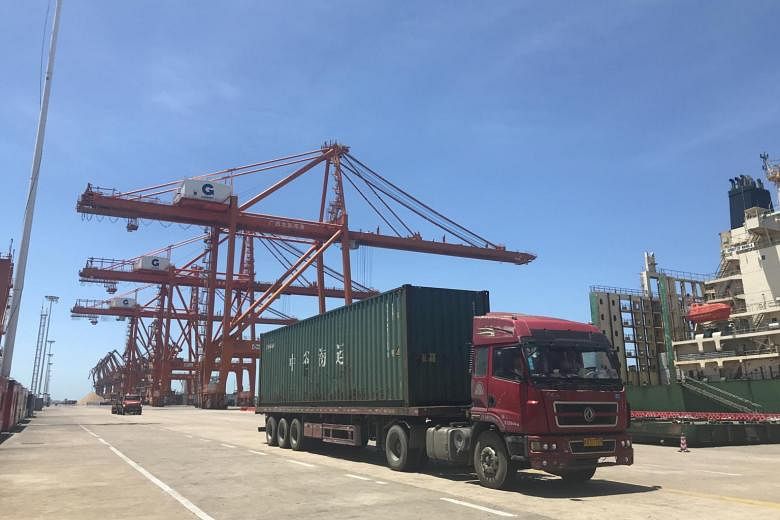SHANGHAI - The Chongqing Connectivity Initiative (CCI), a Sino-Singapore project, and China's own Southern Transport Corridor are complementary in nature, said Minister for Trade and Industry Chan Chun Sing.
The CCI, launched in 2015, aims to drive the growth of China's less-developed western region through better transport, financing and data connectivity while the corridor is a north-south trade route that links China's western provinces to the sea via a network of railway lines.
"This is not a zero sum game. In the past, if I build an industrial park, you may say that this industrial park has taken some of my businesses and will build another to compete," Mr Chan said in a video interview with Xinhuanet, an affiliate of Xinhua, China's state news agency, which was released on Friday (Nov 2).
Instead, there are shared benefits from the network created by the two projects.
"The more people use this network...to move their goods, the lower our price will be... The more people come to participate in this network, the more economic benefits we have," said Mr Chan, Singapore's point man for the CCI.
It is the third Sino-Singapore government-to-government project after the Suzhou Industrial Park and the Tianjin Eco-city.
Mr Chan noted that the south-western city of Chongqing is a point that can "radiate" to the surrounding nine provinces, while Singapore is another point that can radiate to the other nine countries in South-east Asia.
"So connecting these two points together will produce what we call the dumbbell effect. Chongqing is an important hub in western China and Singapore is a hub in South-east Asia. When the two hubs are linked... we will combine the strength of our two economies," he said.
Mr Chan also thinks that more could be done to build upon the existing basic infrastructure in the Southern Transport Corridor.
For example, in the last mile leading to the Qinzhou port in Beibu Gulf in southern Guangxi, the key is to work out how to seamlessly connect the railway to the port.
"They are beginning to prepare how to extend the railway to the port. If this seamless connection can be achieved, then our economic effect will be even better," he said, adding that "we hope to bring more fresh vegetables and fruits from South-east Asia to the north-western part of China.
"We are also stepping up efforts in terms of cold chain. How to take the entire cold chain from the sea to the Beibu Gulf and then to the Guoyuan Port in Chongqing is another important area for us to work on," he added.


